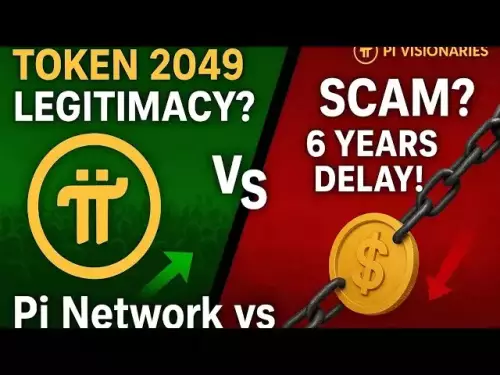-
 bitcoin
bitcoin $114779.865156 USD
2.30% -
 ethereum
ethereum $4226.519789 USD
2.39% -
 tether
tether $1.000545 USD
0.04% -
 xrp
xrp $2.890223 USD
0.92% -
 bnb
bnb $1030.029301 USD
2.95% -
 solana
solana $212.824944 USD
1.69% -
 usd-coin
usd-coin $0.999757 USD
0.01% -
 dogecoin
dogecoin $0.234961 USD
-0.27% -
 tron
tron $0.337174 USD
0.42% -
 cardano
cardano $0.804783 USD
0.09% -
 hyperliquid
hyperliquid $45.748770 USD
-2.85% -
 chainlink
chainlink $21.699170 USD
0.82% -
 ethena-usde
ethena-usde $1.001452 USD
0.08% -
 avalanche
avalanche $30.237800 USD
1.14% -
 stellar
stellar $0.372604 USD
1.52%
How to adjust Ethereum smart contract
To modify Ethereum smart contracts, a deep understanding of Solidity, the EVM, and development environments like Truffle or Hardhat is crucial for effective adjustments and post-deployment monitoring.
Nov 10, 2024 at 08:24 pm

Uncovering the Dynamics of Ethereum Smart Contract Adjustment
Ethereum smart contracts, the cornerstone of decentralized applications, offer immutable code execution on the blockchain. While this immutability ensures security and transparency, it also poses challenges when modifications are necessary. To navigate this landscape, a thorough understanding of smart contract adjustment is crucial. This comprehensive guide delves into the intricacies of modifying Ethereum smart contracts, empowering developers and users alike.
Step 1: Prerequisites for Smart Contract Adjustment
Before embarking on smart contract adjustment, it's imperative to establish a solid foundation:
- Solidity Expertise: Proficiency in Solidity, the programming language of Ethereum smart contracts, is paramount. A deep understanding of Solidity's syntax, data types, and control flow is essential.
- Understanding the EVM: Grasping the inner workings of the Ethereum Virtual Machine (EVM) is crucial. The EVM interprets and executes smart contracts, and knowledge of its opcodes and gas mechanics is fundamental.
- Truffle or Hardhat: Utilizing a development environment like Truffle or Hardhat simplifies smart contract compilation, deployment, and testing. These tools streamline the development process.
Step 2: Identify the Need for Adjustment
Pinpoint the specific reasons why smart contract adjustment is necessary. Common reasons include:
- Bug Fixes: Unforeseen bugs or errors in the original code require prompt rectification.
- Feature Enhancements: Expanding the functionality of the smart contract with new features adds value and improves user experience.
- Security Upgrades: Addressing vulnerabilities or incorporating enhanced security measures bolsters the contract's resilience against potential attacks.
- Compliance Updates: Adjusting the smart contract to align with evolving regulatory requirements or industry best practices ensures compliance.
Step 3: Plan and Test Modifications
Thorough planning is key before implementing any adjustments. Here's how:
- Code Review: Analyze the existing smart contract code to identify the areas that need modification and assess the potential impact of changes.
- Test Cases: Develop comprehensive test cases to verify the behavior of the modified smart contract. Utilize testing frameworks like Truffle's Ganache or Hardhat's local EVM environment.
- Simulation: Run simulations of the modified smart contract to evaluate its performance under various conditions and identify any potential issues.
Step 4: Implement Modifications
Once the plan is in place, meticulously implement the necessary modifications:
- Write Updated Code: Use Solidity to write the updated code, ensuring adherence to best practices and industry standards.
- Compile and Deploy: Compile the modified code with Solidity and deploy the updated smart contract to the desired blockchain network.
- Thorough Testing: Conduct thorough testing to confirm that the updated smart contract operates as intended and meets the specified requirements.
Step 5: Post-Deployment Monitoring
Continuous monitoring is crucial after smart contract adjustment:
- Logs and Metrics: Configure logging and monitoring systems to track the performance and behavior of the updated smart contract.
- Security Audits: Regularly conduct security audits to identify any potential vulnerabilities or areas for improvement.
- Community Feedback: Gather feedback from users and the community to identify any issues or suggestions for further enhancements.
Conclusion
Modifying Ethereum smart contracts requires a multifaceted approach that encompasses technical proficiency, meticulous planning, and ongoing monitoring. By following the steps outlined in this comprehensive guide, developers can confidently adjust smart contracts, ensuring their continued efficiency, security, and alignment with evolving requirements.
Disclaimer:info@kdj.com
The information provided is not trading advice. kdj.com does not assume any responsibility for any investments made based on the information provided in this article. Cryptocurrencies are highly volatile and it is highly recommended that you invest with caution after thorough research!
If you believe that the content used on this website infringes your copyright, please contact us immediately (info@kdj.com) and we will delete it promptly.
- BlockDAG, DOGE, HYPE Sponsorship: Crypto Trends Shaping 2025
- 2025-10-01 00:25:13
- Deutsche Börse and Circle: A StableCoin Adoption Powerhouse in Europe
- 2025-10-01 00:25:13
- BlockDAG's Presale Buzz: Is It the Crypto to Watch in October 2025?
- 2025-10-01 00:30:13
- Bitcoin, Crypto, and IQ: When Genius Meets Digital Gold?
- 2025-10-01 00:30:13
- Stablecoins, American Innovation, and Wallet Tokens: The Next Frontier
- 2025-10-01 00:35:12
- NBU, Coins, and Crypto in Ukraine: A New Yorker's Take
- 2025-10-01 00:45:14
Related knowledge
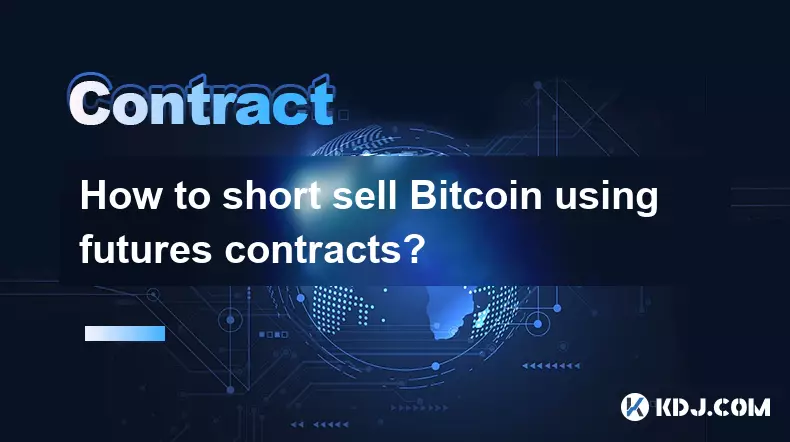
How to short sell Bitcoin using futures contracts?
Oct 01,2025 at 02:54am
Understanding the Role of Decentralized Exchanges in Crypto Trading1. Decentralized exchanges (DEXs) have become a cornerstone of the cryptocurrency e...
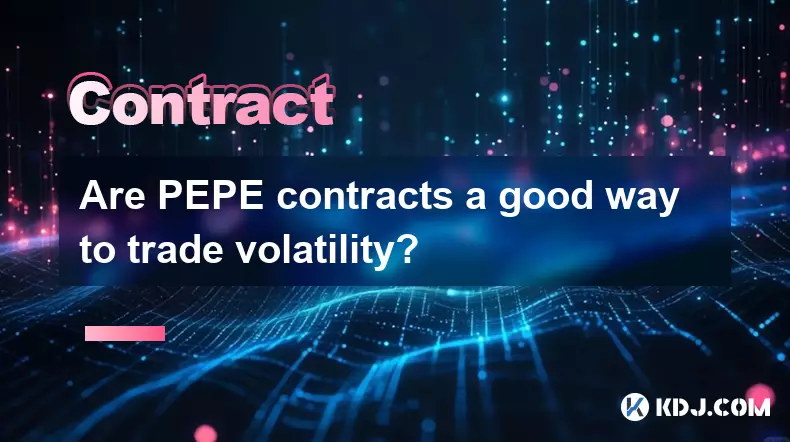
Are PEPE contracts a good way to trade volatility?
Oct 01,2025 at 04:18am
Understanding PEPE Contracts in the Cryptocurrency Market1. PEPE contracts, derived from the broader meme coin movement, have gained attention due to ...
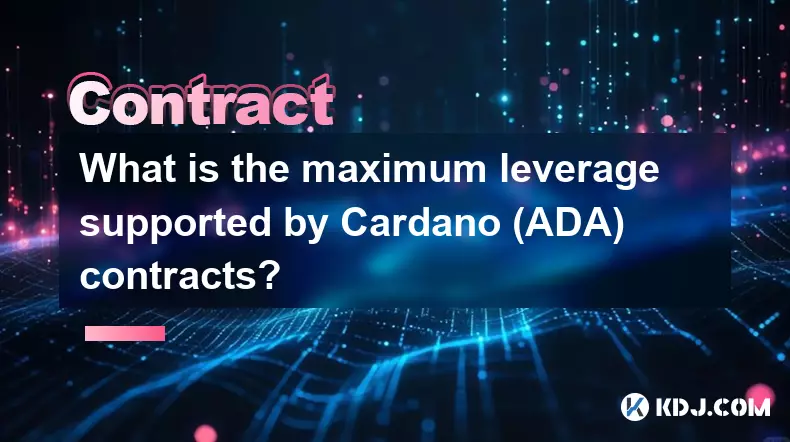
What is the maximum leverage supported by Cardano (ADA) contracts?
Sep 30,2025 at 03:37am
Understanding Leverage in ADA Derivatives Trading1. Leverage in cryptocurrency futures and perpetual contracts allows traders to control larger positi...
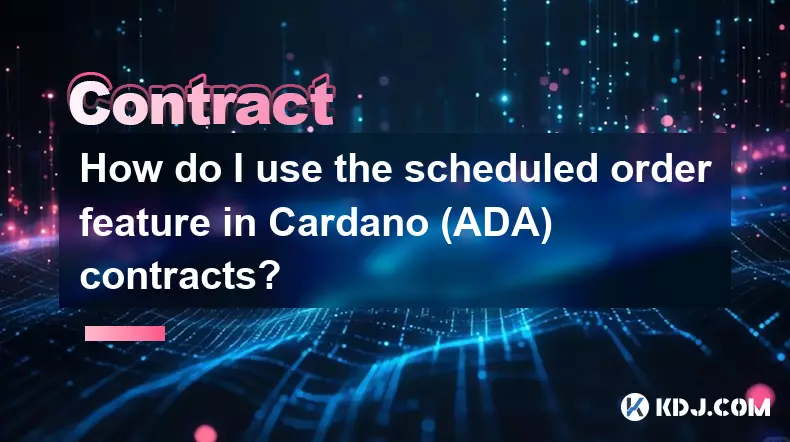
How do I use the scheduled order feature in Cardano (ADA) contracts?
Sep 28,2025 at 10:18pm
Understanding Scheduled Orders in Cardano Smart ContractsCardano operates on a proof-of-stakes consensus mechanism and uses the Plutus scripting langu...

Can I modify the leverage of Cardano (ADA) contracts after opening a position?
Sep 30,2025 at 08:19am
Understanding Leverage in Cardano (ADA) Futures Trading1. Leverage allows traders to control larger positions using a smaller amount of capital. In th...
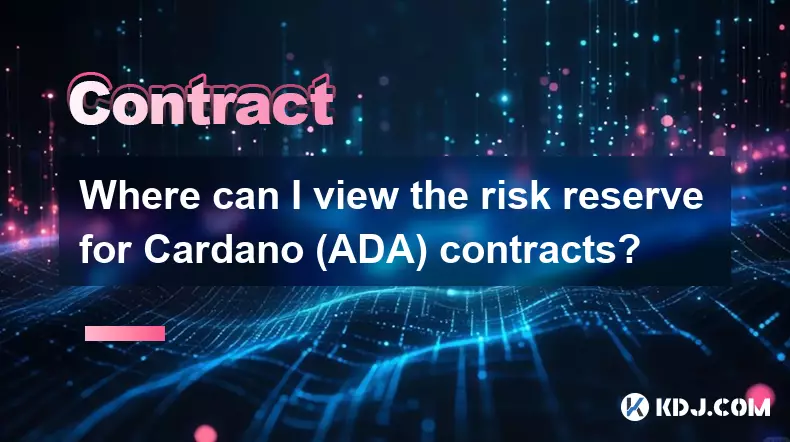
Where can I view the risk reserve for Cardano (ADA) contracts?
Sep 29,2025 at 09:19pm
Risk Reserve Overview in Cardano (ADA) Ecosystem1. The concept of a risk reserve within the Cardano blockchain does not align with traditional central...

How to short sell Bitcoin using futures contracts?
Oct 01,2025 at 02:54am
Understanding the Role of Decentralized Exchanges in Crypto Trading1. Decentralized exchanges (DEXs) have become a cornerstone of the cryptocurrency e...

Are PEPE contracts a good way to trade volatility?
Oct 01,2025 at 04:18am
Understanding PEPE Contracts in the Cryptocurrency Market1. PEPE contracts, derived from the broader meme coin movement, have gained attention due to ...

What is the maximum leverage supported by Cardano (ADA) contracts?
Sep 30,2025 at 03:37am
Understanding Leverage in ADA Derivatives Trading1. Leverage in cryptocurrency futures and perpetual contracts allows traders to control larger positi...

How do I use the scheduled order feature in Cardano (ADA) contracts?
Sep 28,2025 at 10:18pm
Understanding Scheduled Orders in Cardano Smart ContractsCardano operates on a proof-of-stakes consensus mechanism and uses the Plutus scripting langu...

Can I modify the leverage of Cardano (ADA) contracts after opening a position?
Sep 30,2025 at 08:19am
Understanding Leverage in Cardano (ADA) Futures Trading1. Leverage allows traders to control larger positions using a smaller amount of capital. In th...

Where can I view the risk reserve for Cardano (ADA) contracts?
Sep 29,2025 at 09:19pm
Risk Reserve Overview in Cardano (ADA) Ecosystem1. The concept of a risk reserve within the Cardano blockchain does not align with traditional central...
See all articles





















